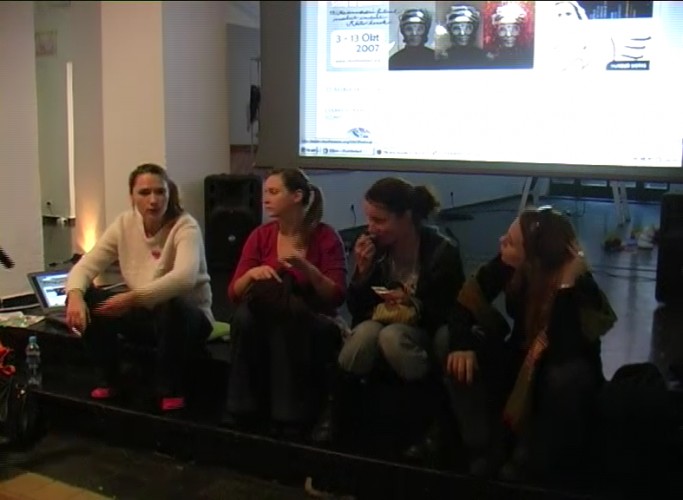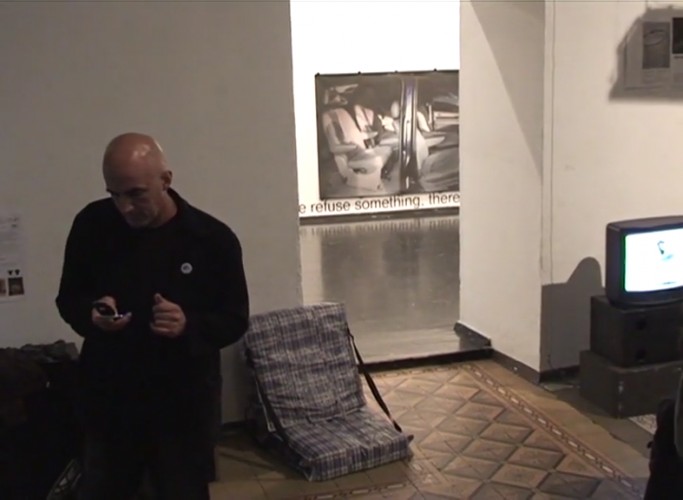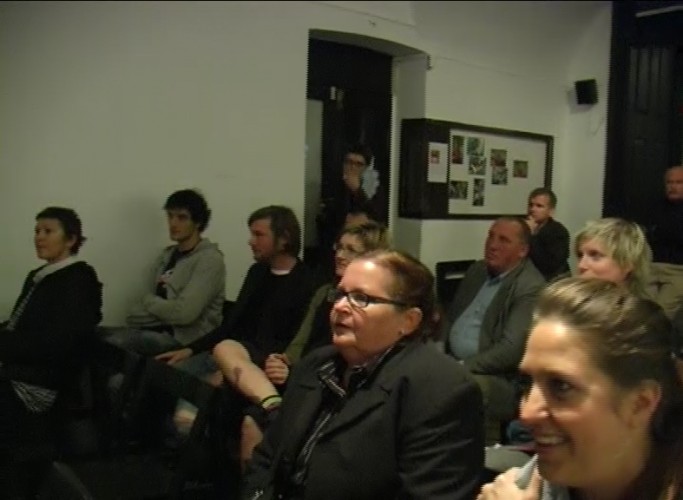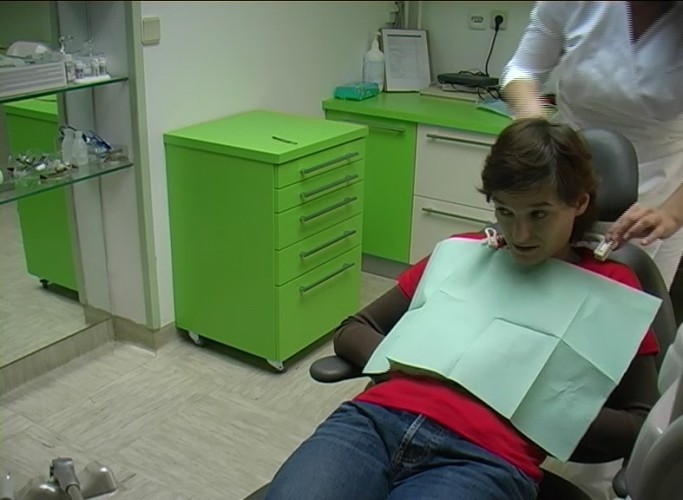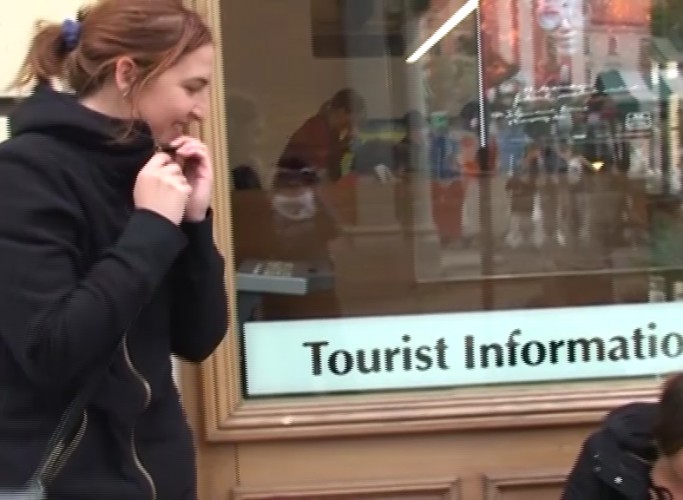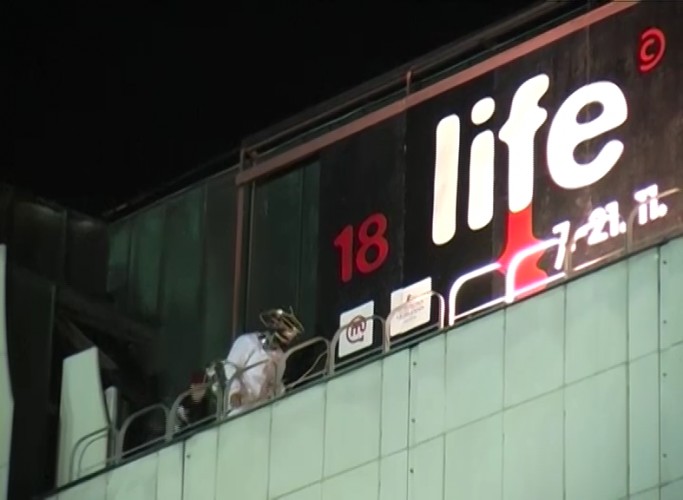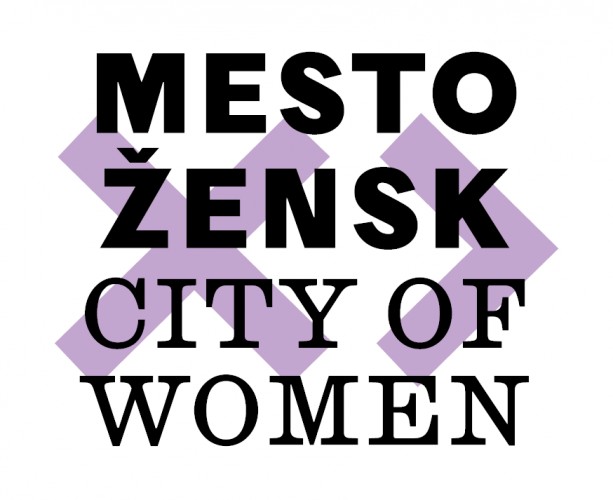Humour Works is an international curatorial and artistic project which elucidates the positive and negative consequences of precarious – uncertain, difficult, toilsome - working conditions, in particular in the context of the old »Eastern« – or to put it differently: »the new« Europe. The year-long project is comprised of four research and performative stations that follow one after another. After stops at Bratislava and Sarajevo, the project was presented in Ljubljana, prior to heading for its journey’s end in Berlin. The artistic programme was specifically formed within local contexts, and aimed in particular at reflection and reciprocal perception.
The series of photographs by Melanie Bonajo entitled Are All Cliches True? is a record of unexpected stage situations, blurring the border between the real and the dreamlike. With the help of the established genres of portrait and fashion photography, the artist plays with the fact that the material can never be fully subordinated. Given the cases of addiction to a variety of apparently subordinate objects (or tools), the appearance is merely superficial, whereas in truth we are actually enslaved by such things and in effect we are the ones who are actually being subordinated. Take the example of contemporary consumer behaviour, and a situation in which a person has the feeling that they are the subject making a choice; this is yet another aberration. Namely, the very option of choice is the one which forces us into a purchase in the first place. By bringing personal pain and collective burden to the fore, Melanie Bonajo reveals the contradictions of contemporary life.
Through the Private Collection II space installation, Anetta Mona Chisa and Lucia Tkacova respond to the commodification of art in an attempt to derail the monopoly of galleries that put a price on art, dictate market values and set themselves up as the arbiters of quality. Hailing from Eastern Europe, a region with post-transition economies marked by the western values of hegemony and globalization, Chisa and Tkacova decided to disrupt the capitalistic art machine by stealing piecemeal from famous private galleries in Paris, Berlin, London, Vienna and New York. Conceived as a piratical gesture (a volatile and intentional disruption of the existing artist-curator-collector chain), the work undermines capitalist market orthodoxy and engenders an autonomous value zone.
Valie Export’s 1976 series of photographs entitled Homometer II was a response to the issue of why work can’t provide a living. A long time ago the artist discovered that depictions, images and pictures are not created in order to express an imaginary unity, but to portray – in particular – difference, variety and contradiction. It is the ontological difference between the image, object and subject that actually represents the junction or the starting-point. In documenting a street action, the artist walks around town with a loaf of bread hanging in front of her belly in order that passers-by can cut off slices. Export’s artwork or action is a continuation of her 1971 investigation entitled On the Mythology of Civilizing Process, in which she focused on the interpretation of symbols; her work thus also speaks of a psychological experiment with symbols and behaviour.
In its mixed media installation entitled HOW TO GET to Europe, the Kanak Attak anti-racist network addresses trickery, manhandling and manipulation at border crossings. With a couple of large posters, photo stories, and a questionnaire, Kanak Attak’s main topic of »How to« continues with provocative questions such as: What is a critical art practice today? How can activism be effectively established? What are the advantages and drawbacks of group dynamics? And the first answer to all of these is definitely No integración or autonomy of migration!
Through re-enactment in a video film, kpD (kleines postfordistisches Drama) addresses the burnout syndrome as a result of »forced« labour on several projects simultaneously, no genuine real free time and irregular payment, etc. The Kamera Läuft! (Rolling!) video project was based on interviews with various cultural workers and addressed the desires and perspectives of overworked and »jammed« individuals, as well as their working day which becomes ever more flexible and largely autonomous. By way of various individual stories and social perspectives, the video reveals where and how the workers are troubled the most.
In an atmosphere flooded with »We want foreign, we don’t have our own«, when we sink our claws in e-euro T-shirts, while Slovene textile industry is laying-off women workers, Barbara Kapelj Osredkar got this passionate nostalgia for the times when she used to bury herself into her grandmother’s boxes filled with »coloured« faces of Slovenian movie stars, mixed with various propagandistic commercial advertisements. In the midst of this romantic dream, there were these images of women who – instead of inciting the making of phone calls – invited you to do the laundry, cook or work in the field. The interactive animation Tvoja (Yours) does not revive the faces of long-forgotten women, but ironizes the ideological interpretation of women’s work in (Slovenian) history.
Based on her own experience as an artist lacking in formal education, Jana Prepeluh was – via a shoe cleaning street action entitled Pri Tleh (Down To Earth) – researching the attitude to non-material or manual work by overworked alienated individuals in a contemporary society in which work is still associated with social status. The artist wanted to investigate prejudices – looking up to, or down upon – towards others, as well as people’s notion and perception of moonlighting in public.
At various locations around the city during the festival, Jana Prepeluh provided special shoe cleaning services – aimed also at those who believe it is for real. After all, it really is about cleaning shoes. Testimonies to the event were available in the gallery through the recordings of conversations between Jana Prepeluh and her customers.
During the festival, Dr. Keka provided preventive and curative interventions as well as minor dental-health ailments treatmens suffered by precarious cultural workers. Dr. Keka »suggests« the following: »In light of the global objective and subjective globalisation of the subject, in the self-consciousness of a multiple body aware of its non-existence, neither at a zero level of the subject nor in the material world of a group of people waiting for a number eight bus, or in the hopeless product of recording the process of awaiting your turn in a dental waiting room, the artist-dentist – who is actually that third thing – considers the immanence of ripping out of the vicious circle of her practise-existence as the agent of capital, and just records the process-result of this (imp)personal (non)production.«
Gwendoline Robin: Short Story
Between 9 pm and 10 pm, during the opening, diligent pyromaniac and artist Gwendoline Robin blew the main engine, the hard disc or perhaps all of it together.
Saturday 6th October, 6 pm
Tatiana Bazzichelli: Hack the Gender! Pink networks of tactical and playful strategies – lecture In Italy in 1980 a series of reflections on sexuality and identity created a seminal network embracing several individuals and groups who propose their bodies so that it can be used within critical territories, journeys beyond boundaries and out of rigid and constraining mental frames. Under such a perspective, sexuality becomes an open, playful and radical code of communication, no longer based on woman-man gender confrontation, but an expression of flexible and floating identity, manifested in the complex connections of networks. In emulating the hacker, combining and recombining hard- and soft-ware into more critical and all-encompassing technologically queer digital communities, with gender activists subverting rigid cultural paradigms and creating new in-between cultural zones – a collaborative cutup, or cultural collage, combines hacker ethics, political activism and independent (sexual) culture.

